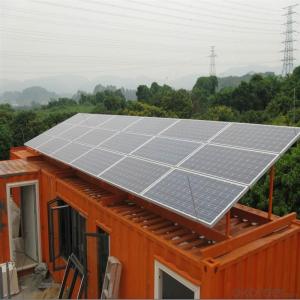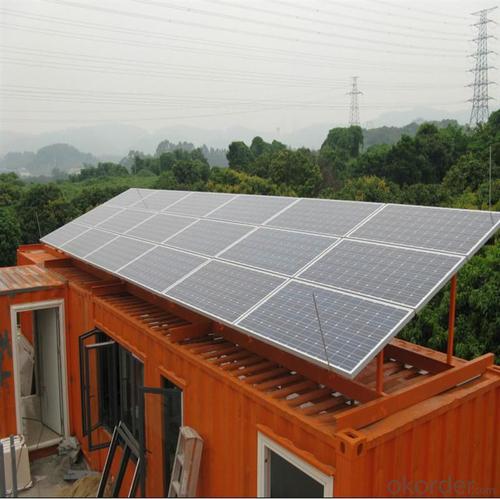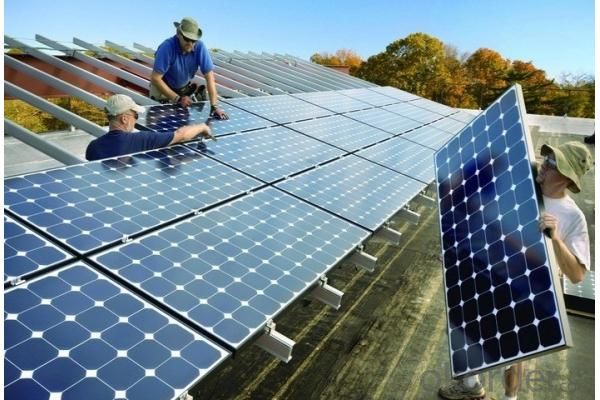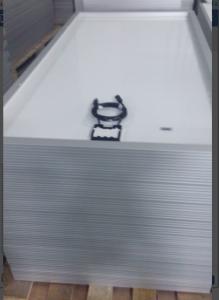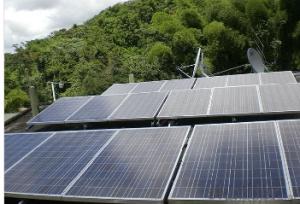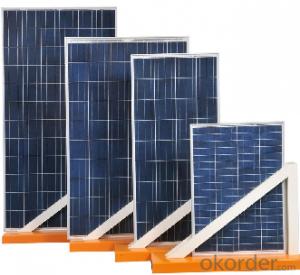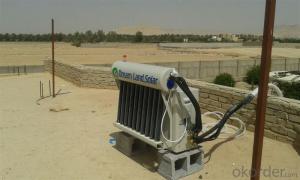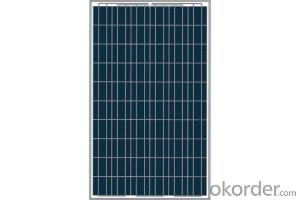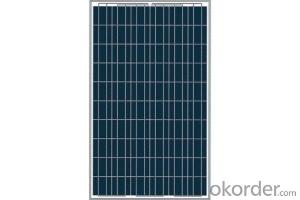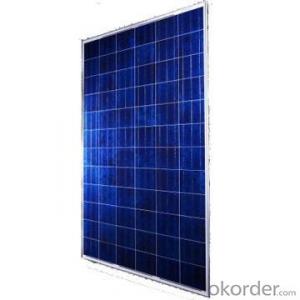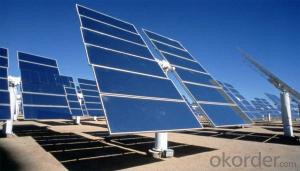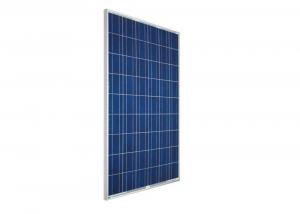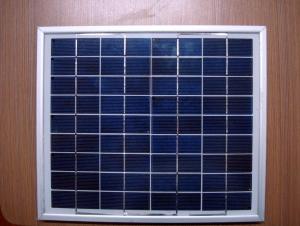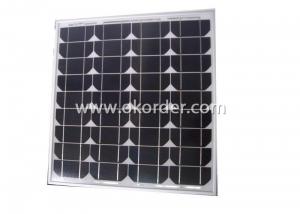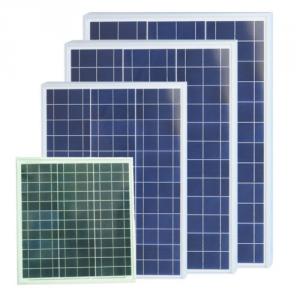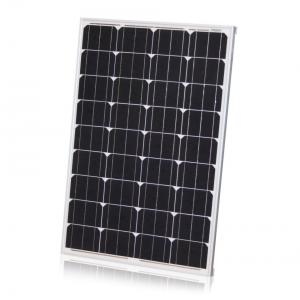Sunpower Solar Panels for Home - CE and TUV Approved 140W Mono Solar Panel
- Loading Port:
- Shanghai
- Payment Terms:
- TT OR LC
- Min Order Qty:
- 10000 watt
- Supply Capability:
- 1000000 watt/month
OKorder Service Pledge
OKorder Financial Service
You Might Also Like
Specification
1. Detailed Introduction for Mono solar panel
Type | CNBM Solar Monocrystalline Series |
Materials | Silicon |
Guarantee | 12 yrs free from defects in materials and workmanship No less than 90% within 10yrs and no less than 80% within 25yrs TUV(IEC61215&IEC61730), CE, UL |
Application | Photovoltaic/ solar/ green energy/ energy saving |
Descriptions | 1.High efficiency crystalline silicon solar cell. Even if under the weak light, the solar module can produce maximum power output. 2.Tempered glass (toughened glass): Anti-reflecting coating and high transmission rate glass increase the power output and mechanical strength of solar module. 3. EVA and TPT: Using high quality EVA and TPT to prevent destroying and water. 4. AI frame: Without screw, rner connection. 6 holes on the frame can be installed easily. 5. Junction box: Multi function junction box with water proof. 6. Long lifetime: ≥25 years; Less power decrease. 7. Good performance of preventing from atrocious weather such as wind and hails. 8. Resisting moisture and etching effectively, not effected by geology. 9. The certificate issued by international authority: UL, TUV, IEC, CE.
|
Packaging Details: | 26pcs/pallet, 28pallets/ 40HQ Our solar panels are packed in cartons, and then pallet. Shipping by sea or by air are both ok, it up to customer’s chose. We’d like to inquiry the freight cost for customer after be informed exact quantity and destination address. |
2. Technology
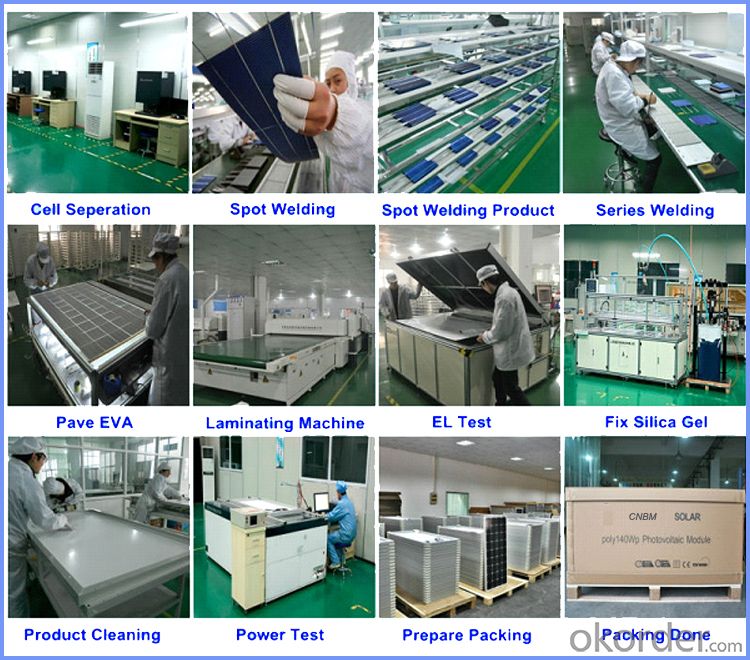
3. Use For
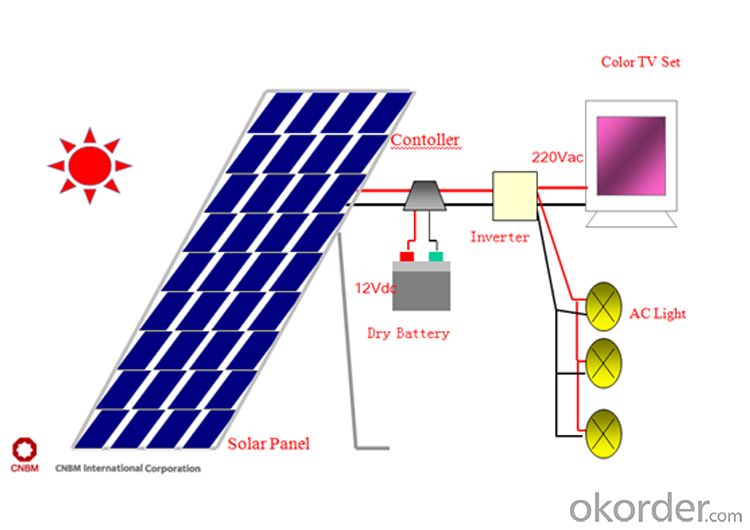
4. The Pictures of the Products
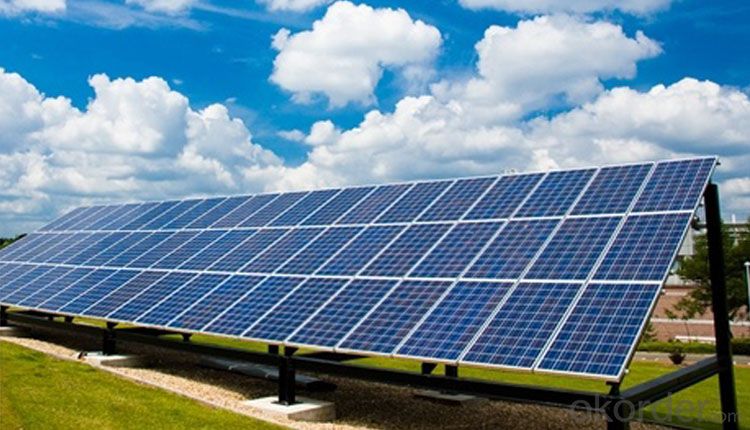
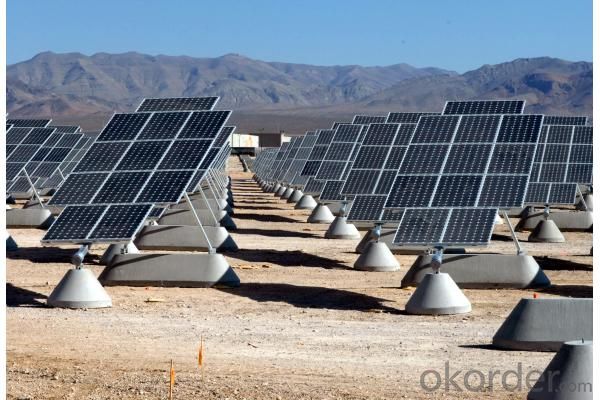

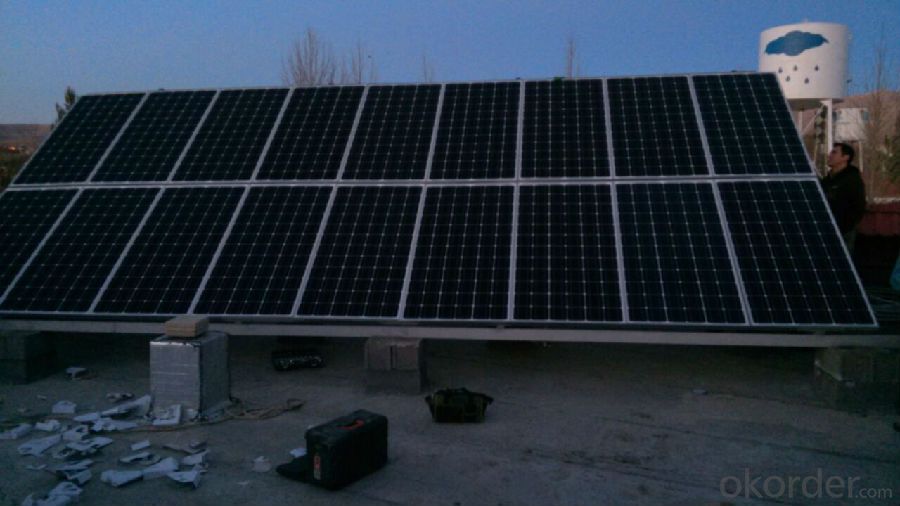
5. Packing Details
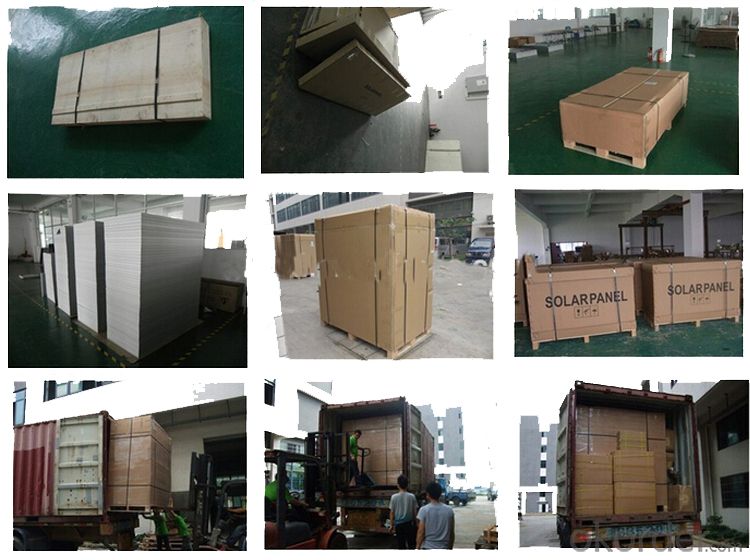
6. FAQ
1). Warranty
Our product performance guarantees for 25 years
12 years guarantee for workmanship
Timeliness of delivery
Quality Products certified (TÜV, UL, CE, ISO)
2). Can you tell me the parameter of your solar panels?
We have different series of cells with different power output, both from c-si to a-si. Please take our specification sheet for your reference.
3). How long can we receive the product after purchase?
In the purchase of product within three working days, We will arrange the factory delivery as soon as possible.
The pecific time of receiving is related to the state and position of customers.Commonly 7 to 10 working days can be served.
- Q: Can solar panels be used in areas with high levels of air turbulence or strong winds?
- Yes, solar panels can be used in areas with high levels of air turbulence or strong winds. However, it is important to ensure that the solar panel installation is designed to withstand such conditions. Proper anchoring and mounting systems, as well as reinforced frames, can help secure the panels and prevent damage or displacement due to wind forces. Additionally, selecting wind-resistant solar panel models can further enhance their performance and durability in such environments.
- Q: Hey guys :)Well I'm in the middle of doing my PSHCE coursework on sustainable energy, focusing on solar panels. I just wanted to ask you what your opinions are of them? Are they really worth it? Are they sustainable? Will they reduce our energy bills? Those sort of questions :)If you are interested in installing solar panels, please mention that, as it would be great! There's lots of information about them on this site ----
- I have a boat in a sunny place and four 80 watt panels. These will run my fridge Tv and a few LED's. I still have to run my engine for hot water and washing machine. My Batteries only last a few years and are a real pain. I go on the mains when I can to get the batteries topped up. The panels are ok if there is nothing else, they are not the answer to the future of energy supply. There is also the moral aspect of the feed in tariff. For the rich to load their electricity bill onto the less well off is not acceptable and those panels on the roof tell all your neighbors that you are doing it. That will show a greedy selfish attitude. If they are any good why don't the power companies buy them and save buying coal?
- Q: I have several 6v 4.5a sealed lead acid batteries. I would like to hook one of them up to a solar panel and have it stay charged from the solar panel all the time, but not overcharged. Is there a simple way to do this with an IC or something? I am only a beginner with circuits so I want it to be something very easy to make. Basically, I want it to stay charged all the time so it's available if I need it for a power out or something.Thanks.
- Yes, you can purchase a solar photovoltaic array to keep your batteries charged. You will need a Photovoltaic Cell Panel that produces 27 + watts (6volts x 4.5 amps = 27 watts) at 6 volts of electricity, a Charge Controller that allows only 4.5 amps of power through to the battery and will reduce the amps as the battery nears full charge and shut off the Panel when the battery is fully charged, and a 6v. Battery. Figure you will need a photovoltaic panel capable of producing a minimum of 27 watts if you are going to charge a completely dead 6 v. battery in one day. (with a clear sky). The way the system works is the sunlight strikes the cells on the panel and releases the excess electrons in the cells, they travel along central wires to your battery and charge the battery. When the sun sets, the procedure is reversed and the electrons flow backwards from the battery, into the photovoltaic cells. That is where the Charge Controller is needed. It acts a one way gate and lets the electrons go into the battery, but won't let them go backwards to the Panel. Just set your panel in the sun at the optimum angle for the season and your latitude on earth, connect the charge controller and then the battery, and it will keep your battery charged. Don't waste your money on the small wattage solar photovoltaic systems that claim to keep your battery charged. They simply can't do it unless your battery is in like new condition and is fully charged when they are hooked up. If you battery is a few months old, the small wattage photovoltaic systems can't keep up with the loss of power from sulfation inside the battery.
- Q: i see these things all over the internet on how to make 'home made solar panels' but all of them require you to buy the solar cells and nothing tells you how to make your own. So how can you make your own solar cells?
- I don't have an idea but would surely refer you to a website where you would surely find information on solar cells and many more alternative energy questions.
- Q: Can solar panels power an electric car?
- Yes, solar panels can indeed power an electric car. By converting sunlight into electricity, solar panels can charge the car's battery, allowing it to run solely on solar energy. This combination of solar power and electric vehicles promotes sustainable transportation and reduces reliance on fossil fuels.
- Q: I'm wondering if the cost of the panels and equipment have come down enough to make them viable in areas like Seattle or Vancuver for example.
- The key is the average insolation value for the location. This is a number that represents the effective numbers of sunlight available per day. The insolation for Seattle varies from 2.9 and 3.57, depending on who is reporting the number. The insolation where I live, near San Francisco is 5. For me, solar is paying off.
- Q: Can solar panels be used to power a restaurant?
- Yes, solar panels can be used to power a restaurant. By installing solar panels on the rooftop or in a nearby area, the restaurant can generate clean and renewable energy to meet its electricity needs. These panels convert sunlight into electricity, which can power various appliances, lighting, and other electrical systems within the restaurant. Additionally, solar panels can help reduce the restaurant's reliance on the traditional power grid, leading to potential cost savings and environmental benefits.
- Q: What is the typical warranty period for solar panels?
- The typical warranty period for solar panels is around 25 to 30 years.
- Q: Can solar panels be installed on a high-rise building?
- Yes, solar panels can be installed on a high-rise building. In fact, high-rise buildings can be ideal locations for solar panel installation due to their height and large surface areas. By utilizing the available roof space, high-rise buildings can generate significant amounts of solar energy, helping to reduce their reliance on traditional energy sources and lowering their carbon footprint.
- Q: China is the world's biggest producer of solar panels
- Or maybe he should increase tax benefits for domestic manufacturers of solar panels, so that they are actually manufactured here instead of in China? Oh, wait. He is. But I've seen questions in which you whine about tax cuts for renewable energy because you think renewable energy can't be profitable.
Send your message to us
Sunpower Solar Panels for Home - CE and TUV Approved 140W Mono Solar Panel
- Loading Port:
- Shanghai
- Payment Terms:
- TT OR LC
- Min Order Qty:
- 10000 watt
- Supply Capability:
- 1000000 watt/month
OKorder Service Pledge
OKorder Financial Service
Similar products
Hot products
Hot Searches
Related keywords
